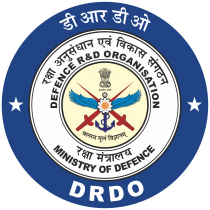Insights on the Aircraft Fuel Systems Global Market to 2026 - by Engine Type, Component, Technology, Application and Region - ResearchAndMarkets.com
The "Aircraft Fuel Systems Market: Global Industry Trends, Share, Size, Growth, Opportunity and Forecast 2021-2026" report has been added to ResearchAndMarkets.com's offering.
The global aircraft fuel systems market is expected to exhibit moderate growth during 2021-2026. Looking forward, the publisher expects the global aircraft fuel systems market to grow at a CAGR of around 5% during the forecast period (2021-2026).
Aircraft fuel systems help in loading, storing, managing and delivering fuel to the propulsion system of an aircraft. They are also used for decreasing weight and optimizing the aircraft's center of gravity (COG) by allowing fuel dumping. They comprise numerous components that ensure uniform flow of clean fuel in all operating conditions. Most aircraft fuel systems differ from each other depending on the size and type of the aircraft in which they are installed. Over the years, manufacturers have introduced pre-calibrated fuel systems that help to expedite installation for aircraft manufacturers, along with systems that do not require frequent maintenance and inspection.
Nowadays, with an increasing focus on lowering the weight of the aircraft and improving fuel efficiency, aircraft manufacturers are incorporating advanced lightweight materials in both structural and semi-structural components, which is creating the demand for lightweight, safe and reliable fuel systems. Further, the rising passenger traffic, coupled with the growing global aircraft fleet, is impelling the market growth. Various government-funded organizations are also funding research and development (R&D) activities for creating fuel systems suited for the new generation aircraft. For instance, the EU-funded SAfer FUEL (SAFUEL) project is promoting the development of systems that can meet the constraints posed by electrical connectivity and highly flammable composite materials used in modern airplanes. Manufacturers are also working on reducing the amount of electricity required for reading fuel level as well as conductive metals in fuel tanks. Some of the other factors that are strengthening the growth of the market include technological advancements in military aircraft and development in the commercial aviation sector.
Companies Mentioned
- Eaton Corporation,Parker-Hannifin Corporation
- Woodward Inc.
- Honeywell International Inc.
- Triumph Group Inc.
- Meggitt PLC
- GKN plc.
- Safran SA
- Crane Co.
- United Technologies Corporation
Key Questions Answered in This Report:
- How has the global aircraft fuel systems market performed so far and how will it perform in the coming years?
- What are the key regional markets in the global aircraft fuel systems industry?
- What has been the impact of COVID-19 on the global aircraft fuel systems industry?
- What is the breakup of the market based on the engine type?
- What is the breakup of the market based on the component?
- What is the breakup of the market based on the technology?
- What is the breakup of the market based on the application?
- What are the various stages in the value chain of the global aircraft fuel systems industry?
- What are the key driving factors and challenges in the global aircraft fuel systems industry?
- What is the structure of the global aircraft fuel systems industry and who are the key players?
- What is the degree of competition in the global aircraft fuel systems industry?
Key Topics Covered:
1 Preface
2 Scope and Methodology
3 Executive Summary
4 Introduction
4.1 Overview
4.2 Key Industry Trends
5 Global Aircraft Fuel Systems Market
5.1 Market Overview
5.2 Market Performance
5.3 Impact of COVID-19
5.4 Market Breakup by Engine Type
5.5 Market Breakup by Component
5.6 Market Breakup by Technology
5.7 Market Breakup by Application
5.8 Market Breakup by Region
5.9 Market Forecast
6 Market Breakup by Engine Type
7 Market Breakup by Component
8 Market Breakup by Technology
9 Market Breakup by Application
10 Market Breakup by Region
11 SWOT Analysis
12 Value Chain Analysis
13 Porters Five Forces Analysis
14 Price Analysis
15 Competitive Landscape
15.1 Market Structure
15.2 Key Players
15.3 Profiles of Key Players
For more information about this report visit https://www.researchandmarkets.com/r/cbm7fb
View source version on businesswire.com: https://www.businesswire.com/news/home/20210715005486/en/




